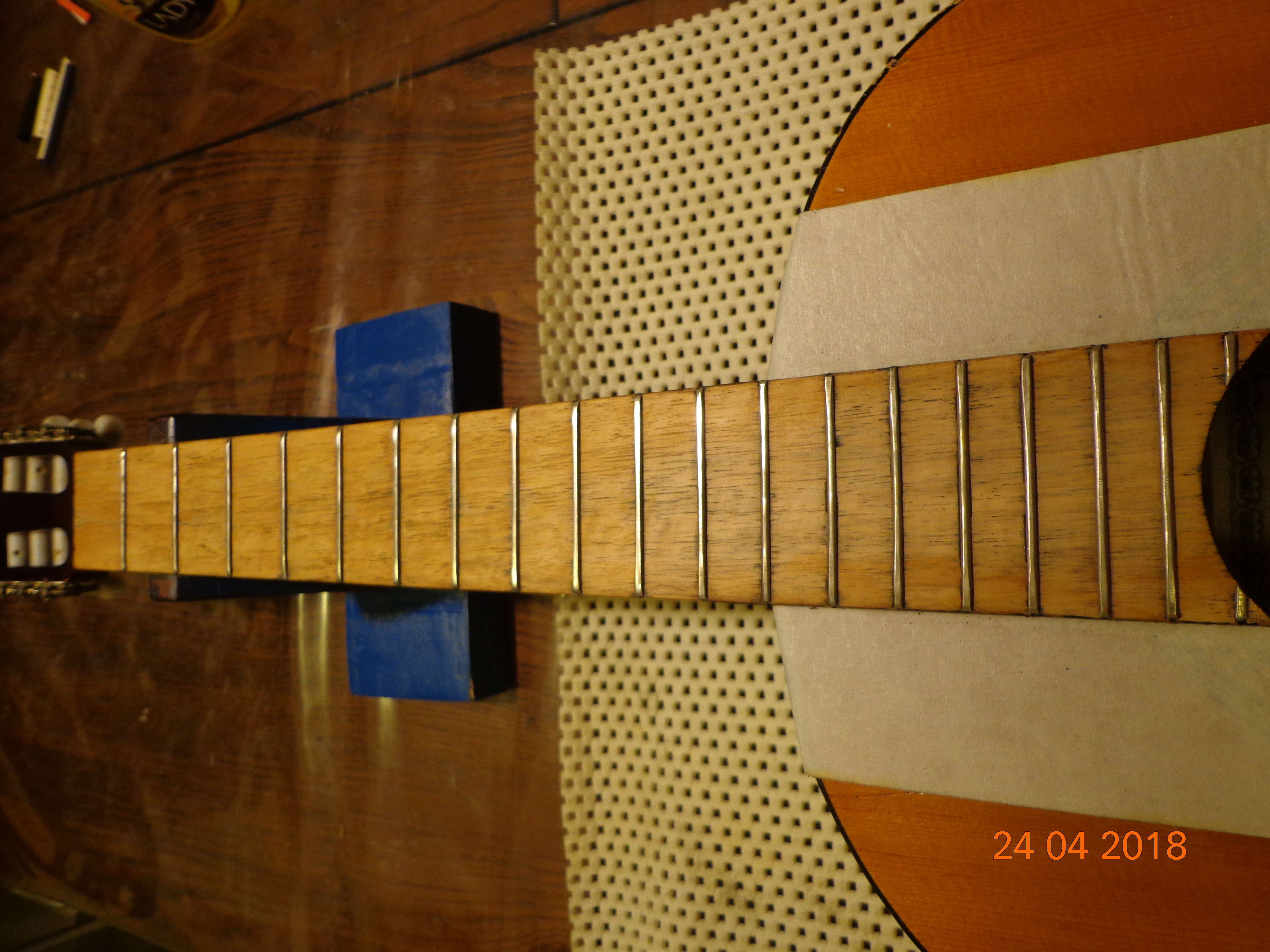
This photograph was sent to me to see if I could rectify the problem. For the life of me I could not fathom what fungus could have caused the fretboard wood to lose its colour like this. I called the instrument in for closer inspection and when I saw it in person, I slapped my head at my own idiocy.
The fretboard wasn’t losing colour – well, in a way it was. The wood was light coloured and had been painted dark. As the paint flaked off, the natural colour of the wood was showing through.
With the owner’s permission, I decided to scrape the rest of the paint from the fretboard. A time-consuming process, it had to be done to keep the instrument presentable.

Once done, the natural beauty of the light-coloured wood shone through and made the instrument look much better.

What do you think?
Here is the guitar with the fretboard oiled and the frets polished.
The owner also wanted to change the tuning machines on the guitar as the original ones were a mix-and-match set, and some had even got twisted over time.

He wished to replace the originals with these ones.

However, as expected, the holes for the screws did not match up. So, I filled up the original holes.

I drilled new holes and then installing the new tuning machines was just a matter of screwing them (pun unintended).

While working on the instrument, I noticed that 40+ years of playing had taken a toll on it (It belonged to the owner’s mother, who used to play it as a younger woman!).

I decided to touch it up a bit and the result was not bad.

And look what fell out of the guitar while I was cleaning it from the inside…

At its sight, I shrank as if I was staring at a King Cobra! This was not good, not good at all. Wonder how long it had been living there and what it had done to the wood.
The owner had also provided a new set of very jazzy black nylon strings to be put on the instrument. As I put them on and began tensioning them, I heard weird groans, creaks and crackles. Those kind of sounds are only caused by the bridge lifting off the top. But I had checked the bridge earlier to see if it was lifting and it was stuck solidly to the top.
When I finally checked the guitar, the bridge had managed to rip the top in an effort to counter the tension of the strings. The silica gel had done its bit!
There was nothing that could be done except feel sad about the instrument and the owner. Maybe, just maybe, if I had tried humidifying the instrument for a couple of weeks when I saw the silica gel sachet, this would not have happened. And then again, that would have been a big ‘if’, for as I said, there was no knowing how long that sachet had been lying inside the guitar.
Naturally, it was a disappointed owner who came to pick up the guitar. My advice to him was to play it as much as the instrument would allow, and later, to hang it up on a wall as a showpiece.
My advice to you, my readers, never, NEVER, put silica gel or other desiccants inside acoustic guitars, especially classical guitars, for these are delicate instruments and do not have the brawn and muscle that flat-top, steel string instruments are lent.
